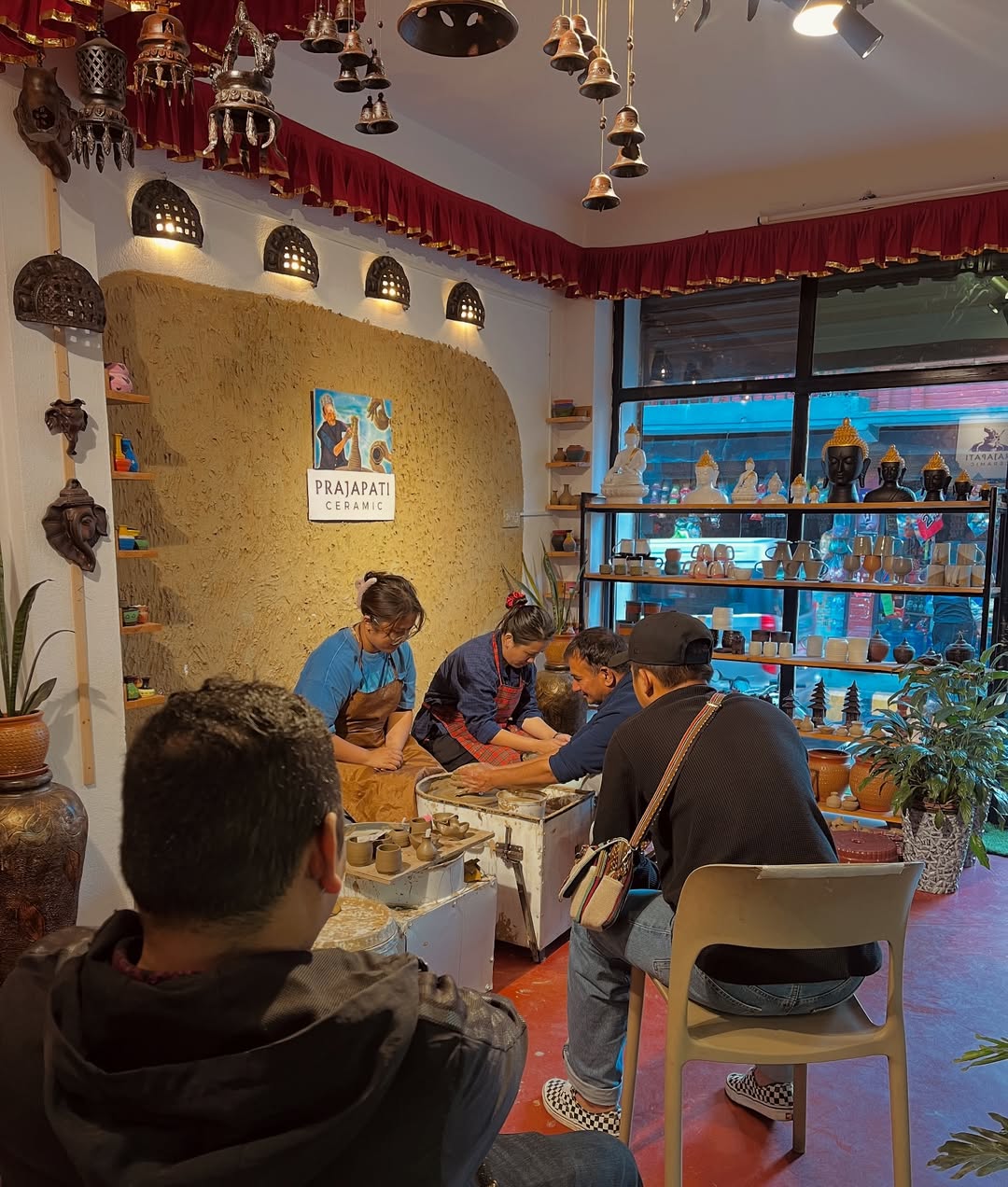Culture & Lifestyle
Moulding calmness
A growing number of young people are turning to pottery to ease stress, express emotions, and reconnect with themselves.
Aarya Chand
These days, it’s not just the master potters who are working with the wheel. Across Nepal, from the heritage alleys of Patan and the workshops of Bhaktapur to Kathmandu’s creative hubs, more young people are picking up clay as a new form of expression.
Youths are looking for something slower and more hands-on to do after work or school. What’s interesting is that many aren’t just trying to make bowls or vases; they’re looking for balance, calm, and a way to breathe. Studies suggest they might be onto more than just a creative hobby—working with clay offers profound mental health benefits.
Emotional expression and catharsis
One of pottery’s greatest strengths is its ability to act as a non-verbal form of emotional expression. Many people struggling with depression, anxiety, or trauma find it difficult to articulate their feelings in words. Pottery offers an alternative: the hands do the speaking. The physical act of shaping, moulding, and carving clay becomes an outlet for feelings that may otherwise remain buried.
A study published in the Journal of Affective Disorders found that clay art therapy significantly reduced depressive symptoms and improved participants’ emotional regulation skills. Working with clay engages multiple psychological processes, including perceptual, emotional, and symbolic, which helps individuals release suppressed emotions in a safe and creative space.
Mindfulness
Many of us today struggle to stay present. Pottery, by contrast, encourages mindfulness through its sensory richness. Your hands get dirty in the process, the spinning of the wheels and the slow hand movements all invite attention. So if your mind wanders too far, your pot collapses. In that sense, it forces mindfulness in a way few other hobbies do.
“Pottery helps me forget my stress. The moment my hands touch the clay, my mind slows down. I focus on shaping and creating; it feels like a quiet break from everyday pressures,” says Aakriti Dhakal, a 23-year-old BALLB student.
“As I shaped the clay, it felt like I was slowly finding calm within myself. From rough, shapeless clay to something more formed, pottery reminded me that life also is shaped through struggle, and beauty can rise from scratch,” she adds.
The repetitive, focused motions required to shape clay help quiet racing thoughts, reduce anxiety, and foster a state of calm awareness. Even short sessions—just 45 minutes—have been shown to lower cortisol levels, the body’s primary stress hormone, making pottery a simple yet effective tool for emotional regulation, especially for individuals with PTSD (Post Traumatic Stress Disorder).
Self-acceptance
One challenge every pottery beginner faces: pots collapse. Glazes crack. Clay doesn’t always listen. But instead of seeing this as a failure, pottery teaches a different lesson—acceptance.

Learning pottery helps individuals face mistakes without judgment, adapt to surprises, and try again. This mirrors broader life skills essential for mental health, including accepting imperfections, persevering through setbacks, and forgiving oneself. Working through the unpredictable nature of clay can help individuals heal from shame, rebuild self-worth, and embrace vulnerability.
Sense of accomplishment
Completing a pottery piece, no matter how simple, delivers a sense of achievement. For individuals battling depression or anxiety, where feelings of helplessness are common—seeing a tangible, beautiful creation emerge from their own hands is empowering.
Craft-based interventions, including pottery, have been shown to significantly improve self-esteem among diverse groups, including elderly residents in nursing homes and individuals with neurological conditions. The finished product—a cup, a vase, a sculpture—stands as physical proof of creativity, resilience, and capability.
Holistic healing: Mind, body, and spirit
What sets pottery apart from many other therapeutic activities is its ability to engage the whole self. It stimulates the senses through touch and sight. It fosters emotional release and symbolic expression. It invites cognitive reflection on patience, imperfection, and growth.
Psychologist Apecksha Gurung explains that pottery engages all five senses, grounding both the body and the mind. “When you immerse yourself in the process, your senses focus entirely on creating. This effect helps regulate emotions, balances breathing, and naturally reduces stress,’’ she says. Pottery in this way supports both emotional and physiological healing.
Pottery therapy works across physical, emotional, and spiritual dimensions. Whether it is the rhythmic spinning of the wheel, the meditative smoothing of clay, or the symbolic meaning assigned to a finished piece, the process fosters an integrated sense of well-being.
Clinical psychologists, such as Jo-Ann Finkelstein, confirm that pottery supports improvements in mood, cognitive flexibility, emotional resilience, and stress regulation.
For individuals recovering from PTSD, for example, pottery provides a grounding experience that helps reduce dissociation, panic, and hyperarousal symptoms.
A complementary therapy
However, pottery alone may not replace other forms of mental health treatment. It is an effective complementary therapy that enhances emotional healing. Therapeutic pottery sessions can be incorporated into broader treatment plans for depression, PTSD, anxiety disorders, grief, and trauma recovery.
Moreover, pottery classes and training centres offer safe, non-judgmental spaces where individuals can reconnect with others, fostering a sense of belonging and social support—another key factor in mental health recovery.
In a world that often demands speed, perfection, and constant productivity, choosing pottery offers us the chance to slow down, make mistakes, and create freely. It reminds us that healing is a process—sometimes messy, sometimes unpredictable, but always rich in growth.
Scientific research and clinical experiences continue to affirm what many pottery enthusiasts have long known intuitively: working with clay not only heals the mind but also the whole person. Whether you’re managing stress, processing grief, rebuilding self-esteem, or simply seeking a mindful hobby, the potter’s wheel may offer more than just art—it may provide transformation.




 9.12°C Kathmandu
9.12°C Kathmandu















